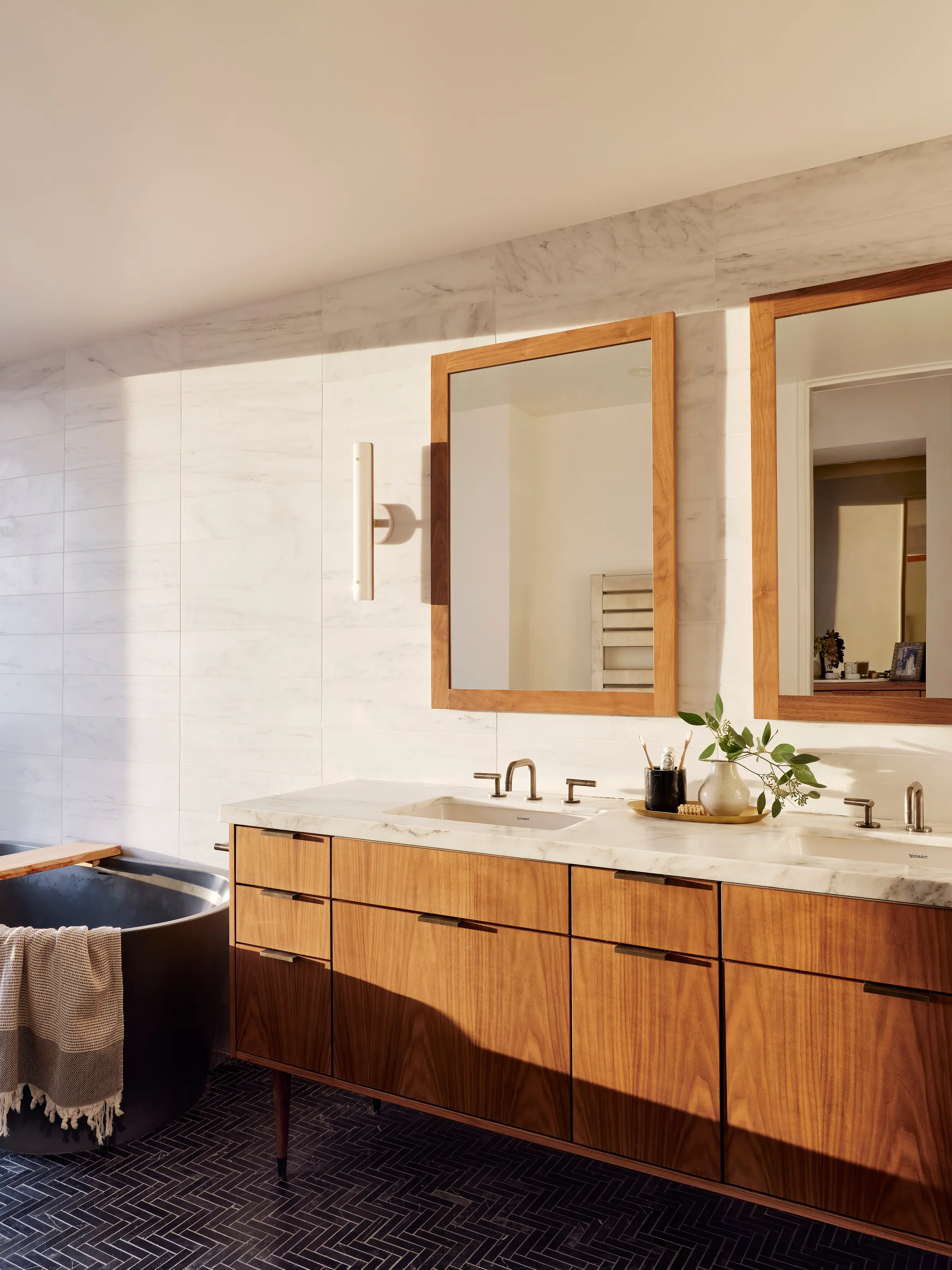June 2025
Reference
Tinderbox

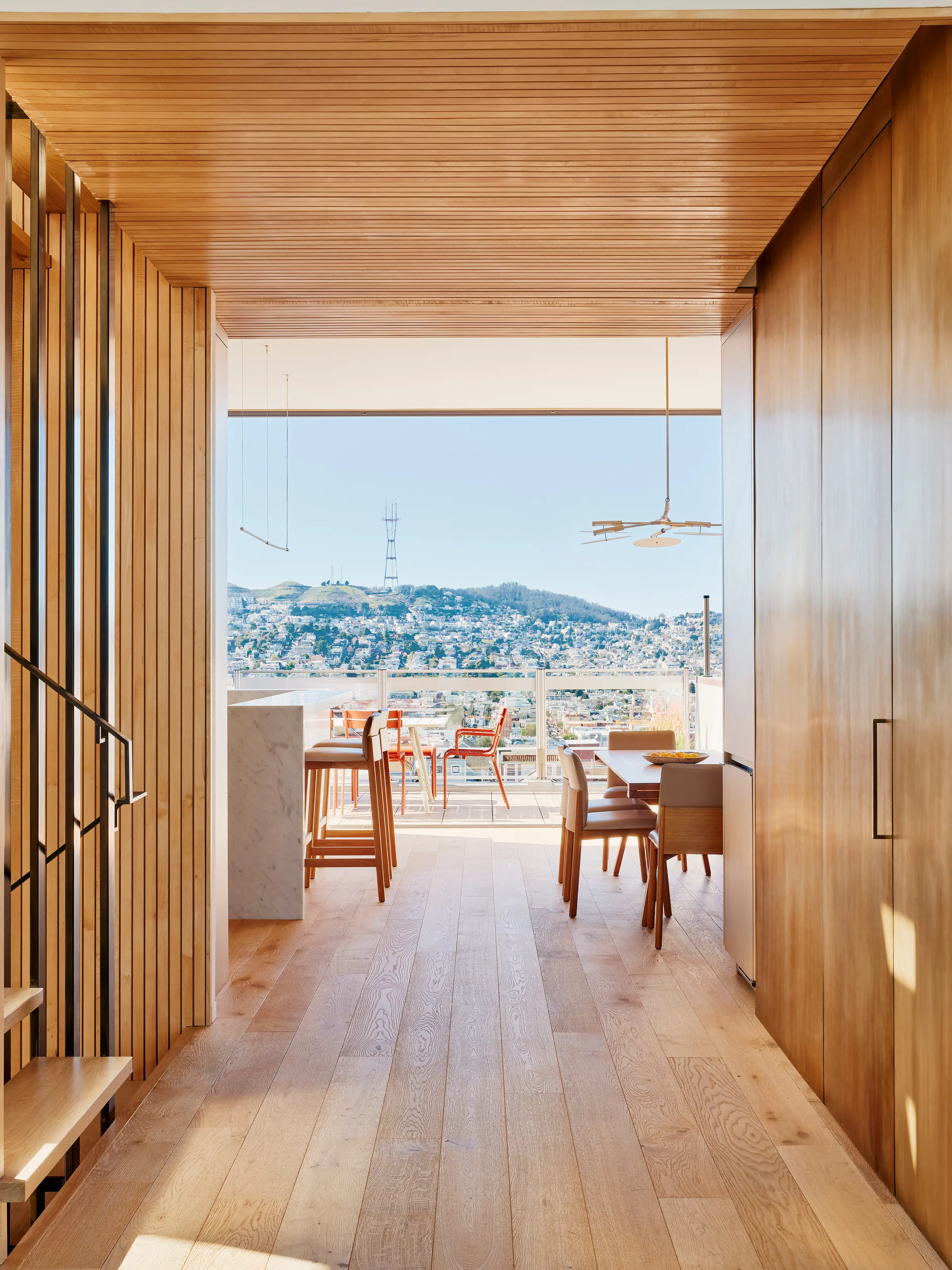
This House is a new home that is simultaneously solid and transparent. As you approach this home, the façade that appears to be solid reveals its layered form. A textured, bush-hammered stone outer cladding gives way to a smooth plaster layer that, in turn, sits atop a transparent layer of windows - taught, frameless, corner glass that frames the view and invites the eye in. This is a representation of our client: private at first, but becoming familiar over time.
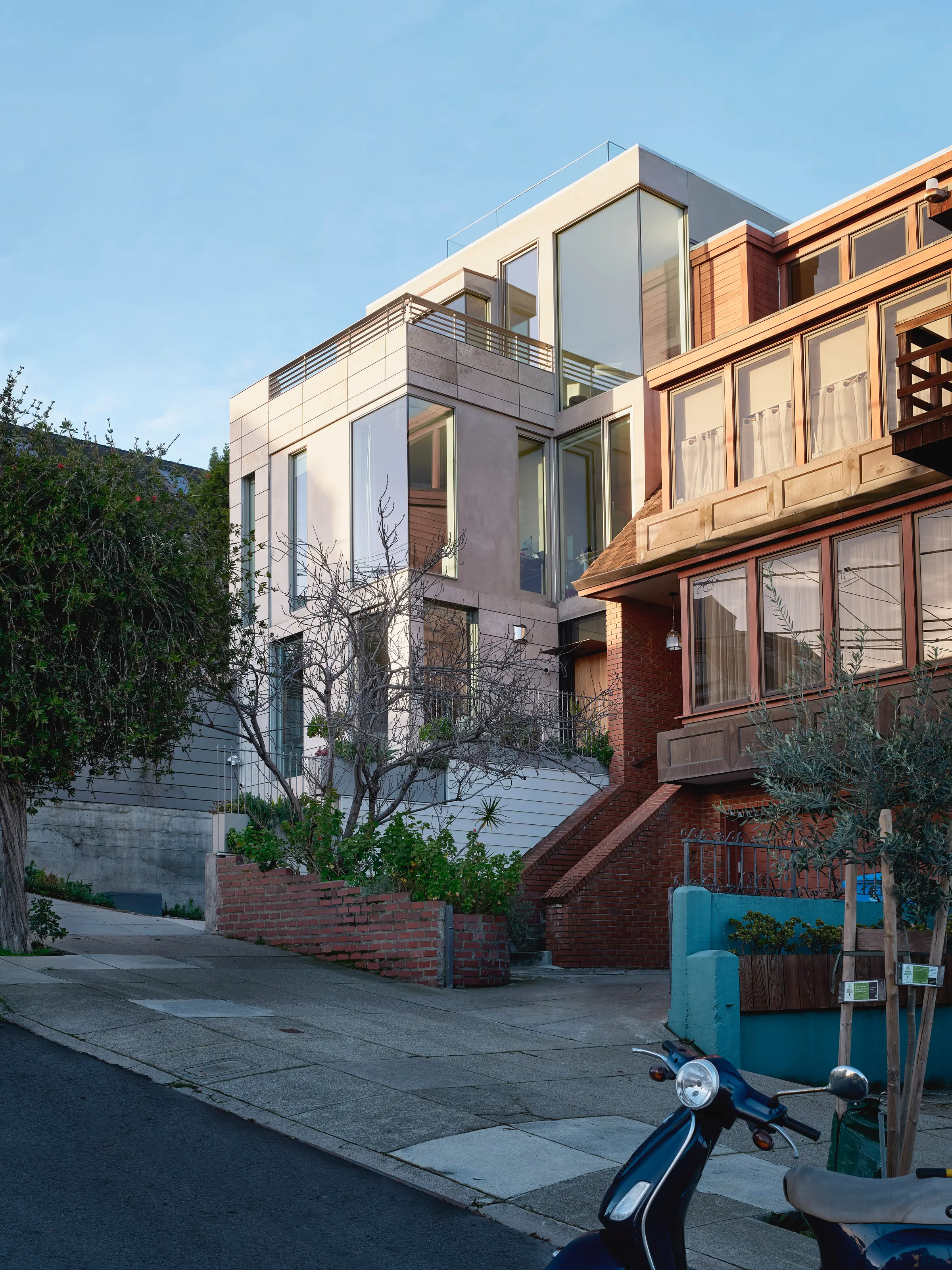
The space of the home is similar. It’s a slow reveal that is based on two related paths of travel. First: an up-and-over movement that carries you from the street to the backyard on this lot that straddles the ridgeline. Second: vertically, traveling up through a space that exists between a single building that is understood as two distinct and separate structures, front (east) and back (west), that bracket a central space “between.” This between space provides for vertical circulation and brings light deep into the mid-body of the home. From the street, a set of cast concrete stairs is enhanced with an overlay of stone treads. This is the same Tuscan Travertine that is used as the façade, allowing for a direct, tactile experience of this material. Arriving at the landing, an oversized pivot door opens to a long, polished concrete foyer. The concrete is a refined material expression of the exterior stair, with one material unfolding into another, and becoming more finished as a progression into the home.
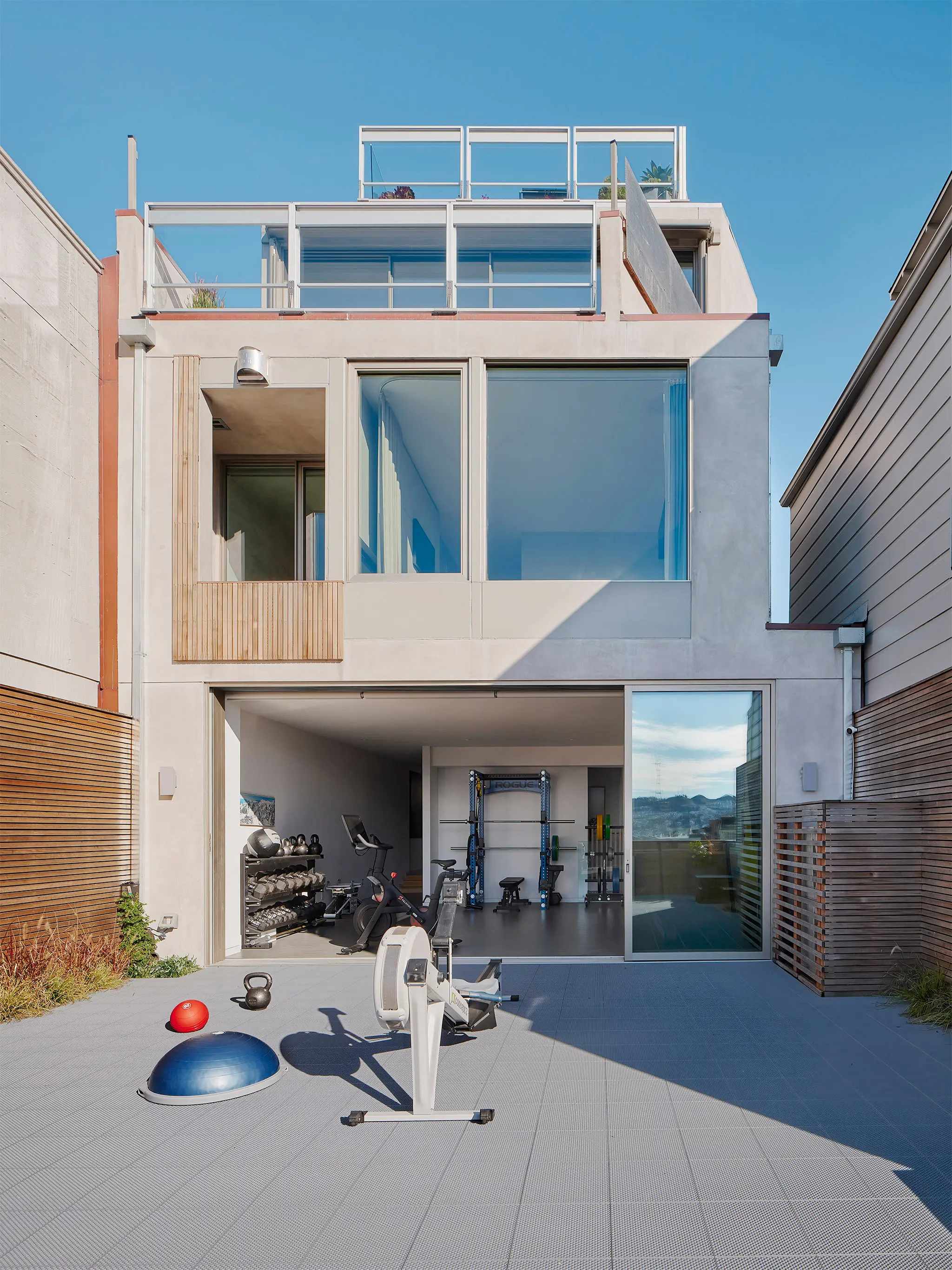
From here, two broad steps lead up to a central, wooden platform. The platform sits squarely in the space between the two structures. This central space is characterized by a two-story volume, featuring a light sculpture, the Mila 7 by Matthew McCormick, a bridge, and a four-story stairway. The well is clad slats alternating between solid fill and open spacing, generating patterns of shadow and light, activating the house through the day and the seasons. Stepping down from the platform completes the over-and-through motion. A subterranean wine cellar is glimpsed as you pass, arriving at a unique den/gymnasium that opens via sliding glass Sky-Frame wall to the backyard an extended space for home fitness.
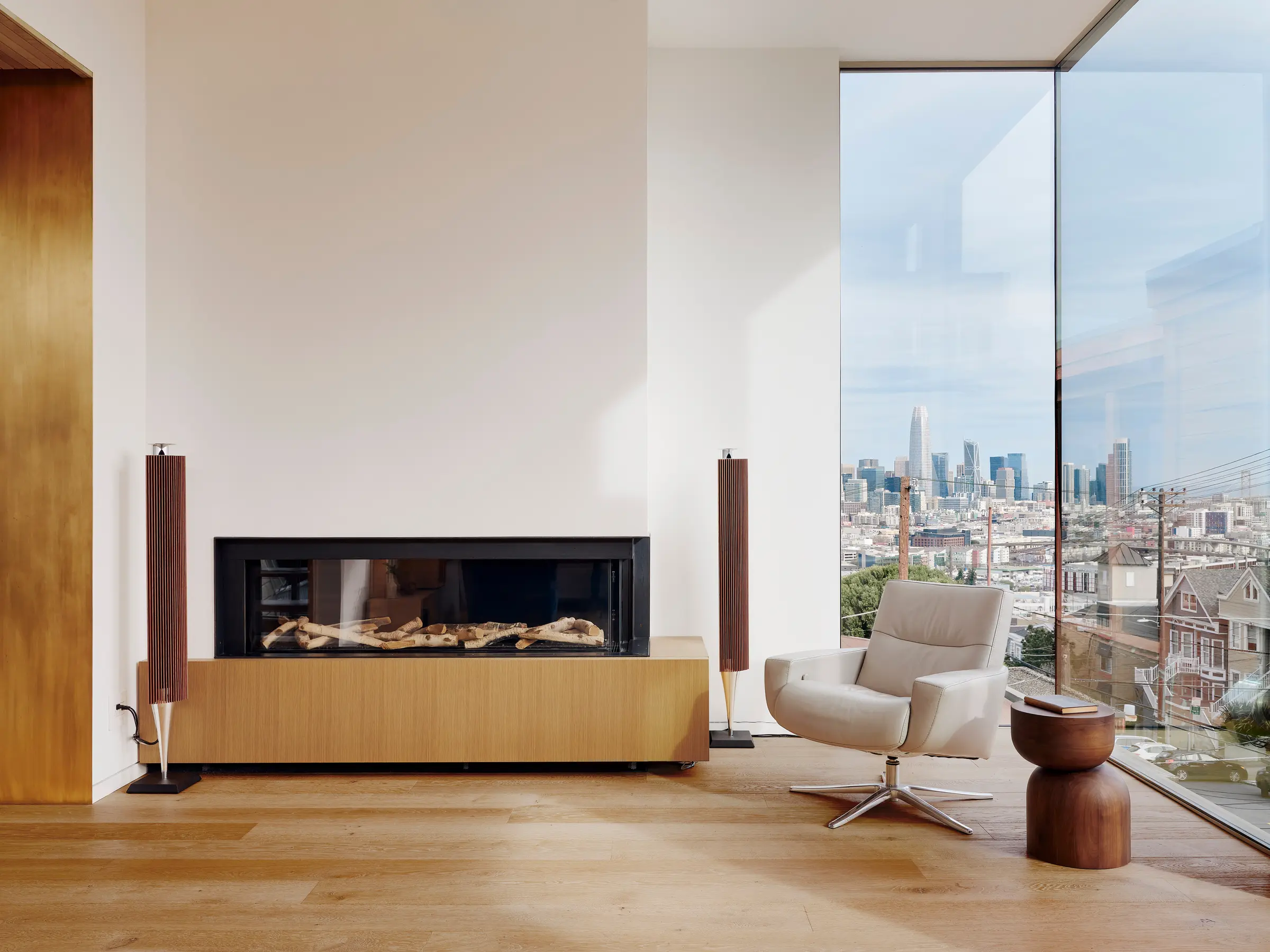
Taking the stair up, the plan is reversed to place the main spaces on the top floor where the views are the most expansive. The living room faces East, enjoying Downtown and Bay views and capturing morning light through an expansive mitered corner window. Fireplaces are a key for this client. The Ortal corner unit and South-facing clerestory window keep this room warm and bright throughout the day. The large sectional sofa by Della Robbia, provides ample seating in a cozy window side nook illuminated by SkLO pendants from Arkitektura.

The kitchen and dining areas face West. The kitchen is a sculpted, honed Carrera marble block with bar tops facing both inside and out. The two sides work to capture outdoor space for barbecues and large gatherings via another Skyframe wall. In the adjacent dining space, the Together dining table by Studioilse is topped by the Branching Disc chandelier by Lindsey Adelman. These elegant pieces add dimension to the space and complement the minimalist aesthetic.

With the living spaces above, the middle floor houses the bedrooms. Two smaller rooms face the eastern view of the San Francisco Bay, captured with mitered glass and a series of floor to ceiling windows that are the defining elements of the front facade.
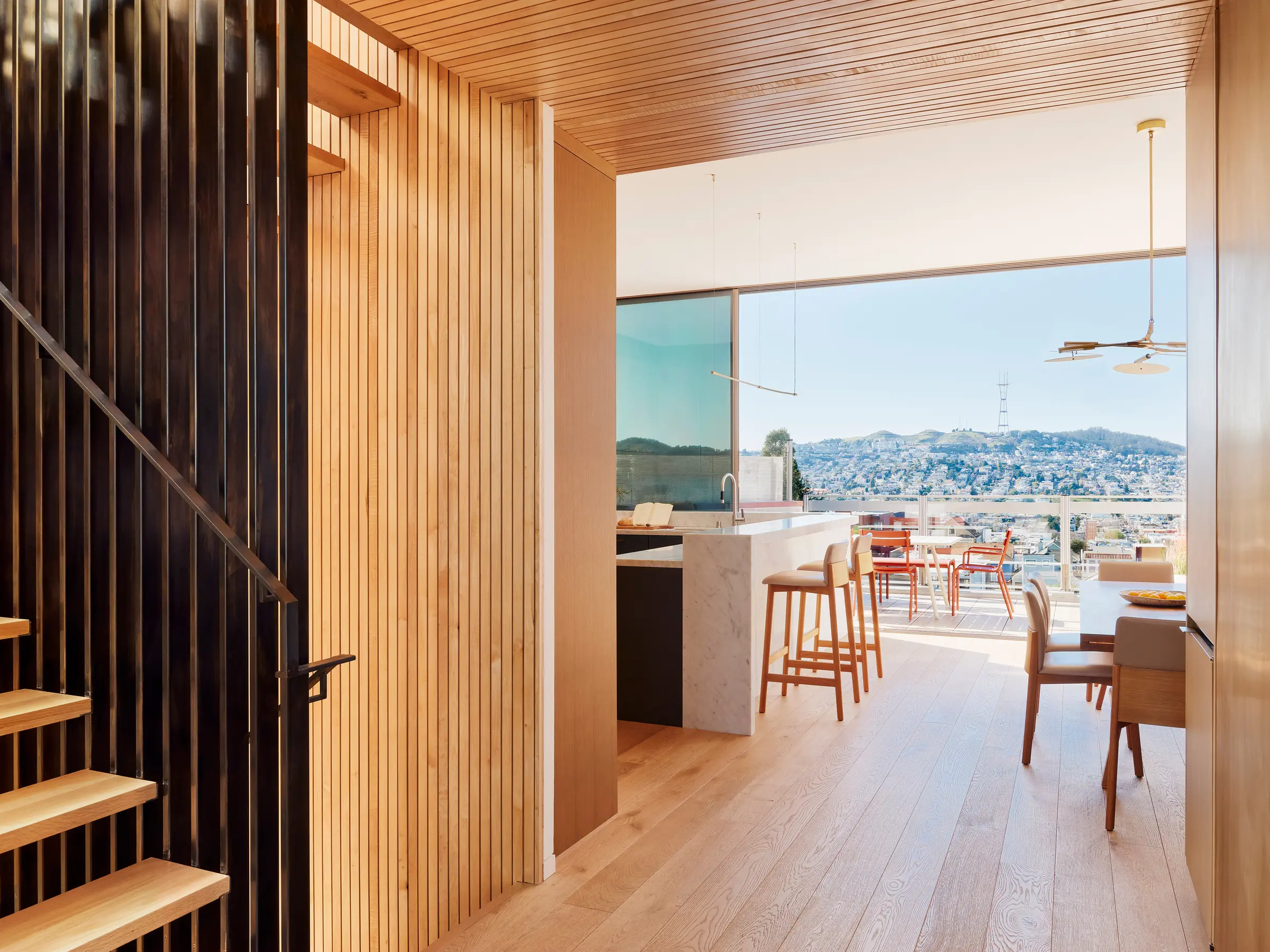
The primary bedroom faces west and includes a two-sided Ortal fireplace that looks through to the marble-clad bath. The bath is furnished with a free-standing concrete vessel bathtub and furniture like vanity that helps to create a sense of expanse in this long, but narrow, urban oasis. At the end of the long room, a curbless, walk-in shower receives light from a white glass window that opens to the central, lightwell space, taking advantage of the light that penetrates the center of the structure.

Materials define interior spaces. Maple slats and brass clad walls work together to define the filter and reflect light, an experiential relationship that, like the façade, reveals itself through time. Each side of the structure has its own character and its own view. The front faces east, defined by morning light and downtown views through mitered corner windows. The back faces west, the sunset and Twin Peaks viewed through operable glass walls that expand the floor area for indoor-outdoor functions. Two houses joined by a central spine and revealing themselves through time.
